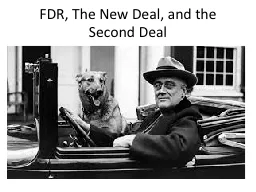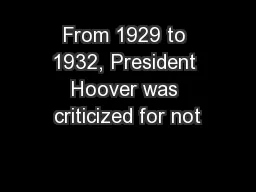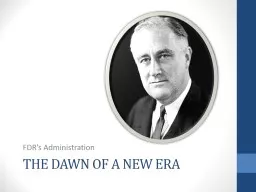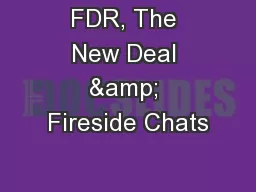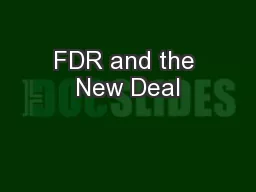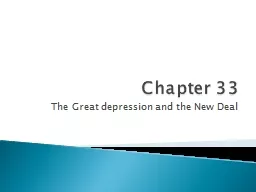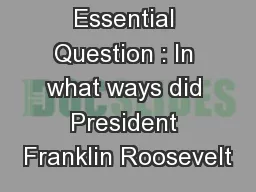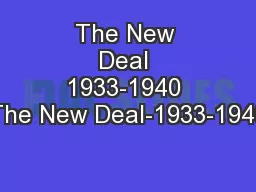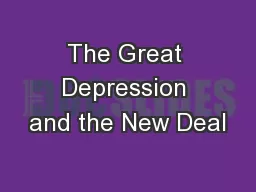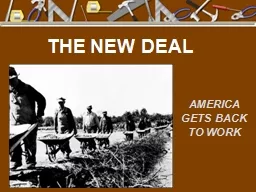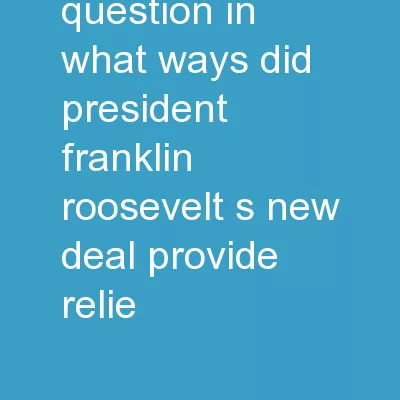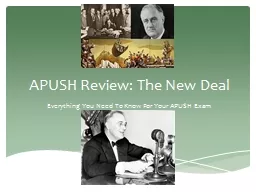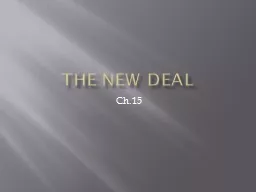PPT-FDR, The New Deal, and the Second Deal
Author : camstarmy | Published Date : 2020-06-25
FDR Born in 1882 5 th cousin of Theodore Roosevelt In 1921 he contracted polio and lost the use of his legs Paralytic Illness Promised Americans a New Deal in 1932
Presentation Embed Code
Download Presentation
Download Presentation The PPT/PDF document "FDR, The New Deal, and the Second Deal" is the property of its rightful owner. Permission is granted to download and print the materials on this website for personal, non-commercial use only, and to display it on your personal computer provided you do not modify the materials and that you retain all copyright notices contained in the materials. By downloading content from our website, you accept the terms of this agreement.
FDR, The New Deal, and the Second Deal: Transcript
Download Rules Of Document
"FDR, The New Deal, and the Second Deal"The content belongs to its owner. You may download and print it for personal use, without modification, and keep all copyright notices. By downloading, you agree to these terms.
Related Documents

